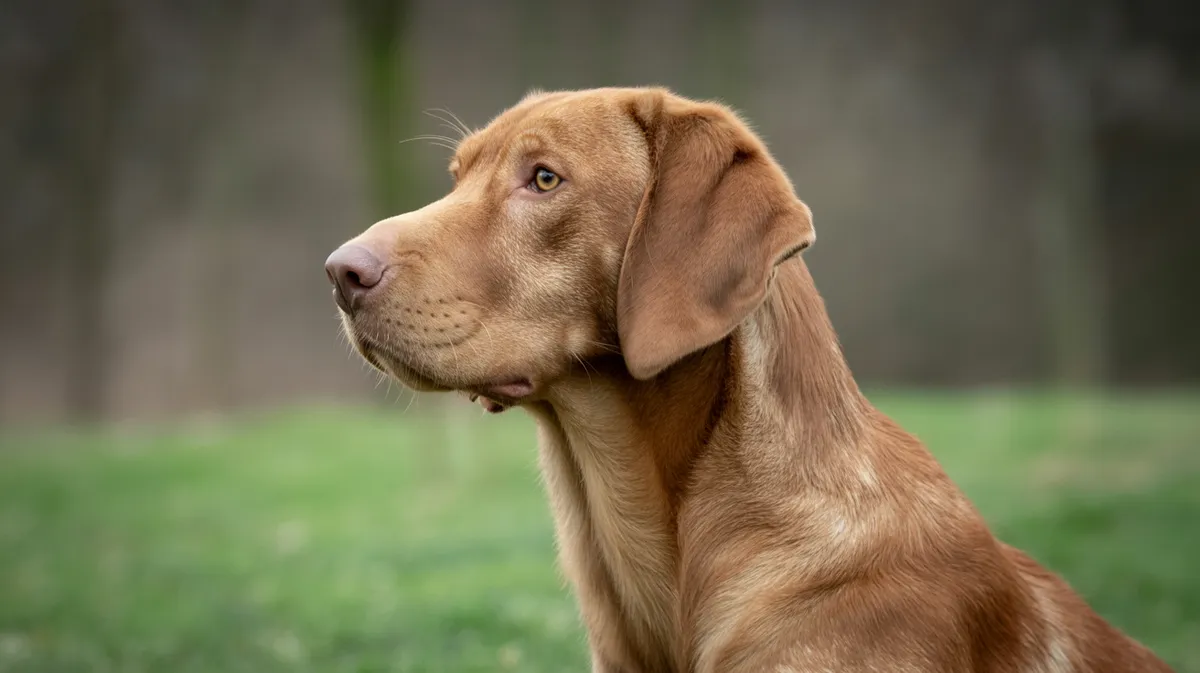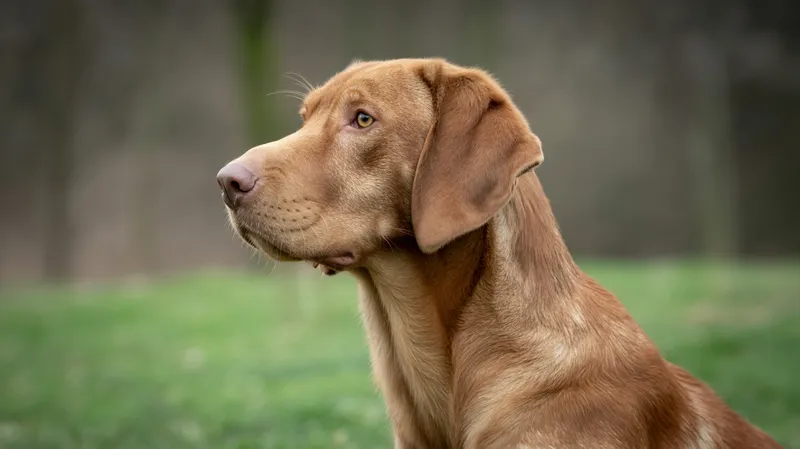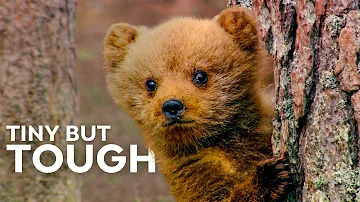
Broholmer
Canis lupus familiaris

Meet the Broholmer
The Broholmer is a large, powerful Danish mastiff-type dog breed originally used for guarding estates and hunting large game such as deer. Distinguished by its robust build, broad head, and calm yet watchful demeanor, the Broholmer is known for its gentle loyalty to its family. This breed nearly went extinct in the mid-20th century but was revived by dedicated enthusiasts. Today, Broholmers are valued as devoted family companions and reliable watchdogs, with an even temperament and strong protective instincts.
Classification
Mammal
Habitat
Domestic; originally estates and rural properties
Diet
Omnivore
Lifespan
7-12 years
Conservation
Rare Breed (Not Evaluated by IUCN)
Weight
40-70 kg
📖Fascinating Facts
Royal Connections
The Broholmer was favored by Danish nobility and often used to guard castles and large estates.
Gentle Giant
Despite their size and strength, Broholmers are known for being calm, friendly, and good with children.
Rescued from Extinction
Dedicated breeders and the Danish Kennel Club worked together in the 1970s to revive the Broholmer from near extinction.
📋Detailed Description
The Broholmer is a large, molosser-type dog breed, typically standing 70–75 cm (27.5–29.5 in) at the withers for males and 68–70 cm (26.7–27.5 in) for females, with weights ranging from 40–70 kg (88–154 lbs). It possesses a rectangular, robust frame, a broad, massive head with a pronounced stop, and a deep, well-muscled chest. The coat is short, dense, and lies close to the body, most commonly in yellow or golden-red with a black mask, though fawn and brindle exist. The Broholmer’s gait is powerful yet fluid, adapted for covering ground efficiently. Behaviorally, the breed is calm, steady, and self-assured, displaying a natural wariness toward strangers but deep affection and loyalty toward its family. Socially, Broholmers are pack-oriented, thriving on close bonds with humans and other dogs, and are known for their gentle interactions with children. Reproductively, they exhibit typical canine estrus cycles, with litters averaging 6–10 puppies. Unique among mastiffs, the Broholmer’s temperament has been selectively bred for a balance of protective instincts and docility, making it an effective guardian that is rarely aggressive without provocation. The breed’s large size and steady demeanor make it well-suited for estate guarding, while its intelligence and trainability allow for successful integration into modern family life.
💡 Did you know?
The Broholmer breed was nearly extinct after World War II but was successfully revived in the 1970s thanks to efforts by the Danish Broholmer Society.
🔬Research & Sources
Wikipedia Summary
The Broholmer, also called the Danish Mastiff, is a large mastiff breed of dog from Denmark, recognized by the Danish Kennel Club and the Fédération Cynologique Internationale. It has been employed as a guard dog in the homes of the wealthy. The breed's numbers dwindled severely during World War II, but the dog made a successful return in the 1970s.
Last Modified: 2/21/2025
🎭Behavior & Social Structure
Broholmers are characterized by their calm, patient, and observant nature. As historically estate guardians, they maintain a territorial instinct, often patrolling their home environment and alerting to unusual stimuli with a deep bark. They are not prone to unnecessary aggression but will position themselves between perceived threats and their family. Feeding behavior is typical of large domestic dogs, requiring a balanced diet to support their mass and joint health. Socially, Broholmers are highly people-oriented, forming strong attachments to their owners and displaying gentle, tolerant behavior toward children and familiar animals. They require daily moderate exercise, such as long walks and supervised play, to maintain physical and mental health. When left alone for extended periods, they may develop separation anxiety or destructive behaviors, underscoring their need for companionship and structure.
👶Reproduction & Life Cycle
Broholmers reach sexual maturity between 18–24 months. Females experience biannual estrus cycles, with a gestation period of approximately 63 days. Responsible breeders conduct health screenings for hereditary conditions such as hip and elbow dysplasia prior to mating. Litters typically consist of 6–10 puppies, though larger litters are possible. Parental care is primarily provided by the dam, who nurses and tends to the pups for the first 6–8 weeks. Breeders often begin early socialization during this period to encourage stable temperaments. The breed does not have a defined breeding season, as is typical for domestic dogs, but ethical breeding practices limit frequency to maintain maternal health.
🛡️Adaptations & Survival
Physically, the Broholmer’s massive build, broad chest, and strong limbs are adaptations for both intimidation and physical confrontation with intruders or large game. The short, dense coat provides protection against the temperate climates of Denmark, while the black mask may serve as a visual signal of maturity and dominance. Behaviorally, the breed’s steady temperament and low reactivity are evolutionary specializations for estate guarding—alert but not overly aggressive, able to distinguish between friend and foe. Their strong social bonds and high trainability are adaptations that facilitate integration into human social structures, enhancing their effectiveness as guardians and companions.
📚Research Sources
🎨Cultural Significance
Historically, the Broholmer was a status symbol among Danish nobility and wealthy landowners, often depicted in estate portraits and referenced in Danish literature. Its role as a guardian of manor houses and hunting estates cemented its reputation as a loyal and formidable protector. The breed is named after Broholm Castle, where it was standardized in the 19th century by Niels Frederik Sehested. Today, the Broholmer is celebrated as a national treasure in Denmark, symbolizing strength, loyalty, and heritage. It is occasionally featured in cultural events and breed exhibitions, contributing to Danish canine history and identity.
🔬Recent Research & Discoveries
Recent genetic studies have focused on assessing the Broholmer’s genetic diversity post-revival, with findings indicating moderate inbreeding coefficients compared to other rare breeds. Ongoing research by Danish and European veterinary institutions is examining the prevalence of hip and elbow dysplasia, as well as cardiac health issues, to inform breeding protocols. Behavioral studies have highlighted the breed’s exceptional stability and low incidence of fear-based aggression, supporting its suitability as a family companion. Conservation genetics projects are underway to identify unrelated lines and promote outcrossing where necessary. The Broholmer is also included in studies of mastiff-type breed evolution, contributing to understanding the domestication and diversification of large working dogs.
🎥Wildlife Videos

Secrets of the Outback | Wild Australia in 4K | Wildlife Nature Documentary
To many, Australia's Outback seems barren and inhospitable — a vast, sun-scorched wilderness with little life to offer. But look ...
Into the Wild Films

Wild Colombia - Fantastic Creatures | The Lost Eden | Free Documentary Nature
Wild Colombia - Fantastic Creatures | The Lost Eden | Free Documentary Nature Watch 'Wild Colombia Revealed' here: ...
Free Documentary - Nature

How Baby Animals Survive in the Wild | HD Nature Documentary
The first months of a wild animal's life are full of challenges. From seal pups on stormy coastlines to bear cubs emerging from ...
Terra Mater

Lions Stuck in Mud Near Crocodile… The Strangest Natural Encounter!
In this rare and thrilling scene, two lions find themselves stuck in the mud of a lake, near a waiting crocodile. Discover the intense ...
wild wonders

WILD SIBERIA | Survival Secrets of the Frozen Wilderness | Animal documentary
Welcome to "WILD SIBERIA | Survival Secrets of the Frozen Wilderness" – where we'll explore the extraordinary survival journey ...
WILD NATURE - Nature animal documentary

3 Hours of The Untold Stories of British Wildlife | Our World
A wildlife documentary series, narrated by Hugh Bonneville, uncovering the hidden lives of animals across diverse habitats ...
Our World
🌍Habitat Information
The Broholmer typically inhabits Domestic; originally estates and rural properties environments. Broholmers have adapted to their environments with specialized features and behaviors.
Primary Habitat:
Domestic; originally estates and rural properties
More detailed habitat information will be available soon.
🛡️Conservation Status
The Broholmer is currently classified as Rare Breed (Not Evaluated by IUCN). Conservation efforts are crucial for preserving this species for future generations.
Common Threats:
- 🏠Habitat loss and fragmentation
- 🌡️Climate change impacts
- 🎯Hunting and poaching
- 🏭Human-wildlife conflict
⚠️Threats & Conservation Challenges
The Broholmer remains a rare breed, with population numbers still recovering from near-extinction during World War II. Genetic bottlenecks have increased the risk of inherited diseases, necessitating careful breeding management. Modern threats include reduced demand for large estate dogs, urbanization, and limited genetic diversity. The breed is not evaluated by the IUCN, but is considered rare and vulnerable by breed organizations. Conservation challenges include maintaining a healthy gene pool, promoting responsible ownership, and preventing indiscriminate breeding that could compromise temperament or health.
🔬Scientific Classification
Scientific Name
Canis lupus familiaris
Classification Hierarchy
🔍 About Taxonomic Classification
Taxonomic classification is a hierarchical system used by scientists to classify and organize living organisms based on shared characteristics and evolutionary relationships.
The system moves from broad categories (Kingdom) to increasingly specific ones, with each animal's scientific name typically consisting of its Genus and species.
📝Community Notes
Share your observations and insights about the Broholmer with our community of wildlife enthusiasts.
Join Our Community
Sign in to share your observations and connect with fellow wildlife enthusiasts.
Sign In to ContributeNo community notes yet
Be the first to share your observations about the Broholmer!
Explore Broholmer
Select a tab above to learn more about this amazing animal.
📸Photo Gallery
No photos available for this animal yet.
🌟Discover More Wildlife
Continue your journey of discovery with more fascinating animals from our database
